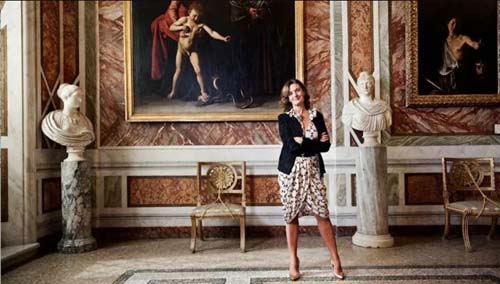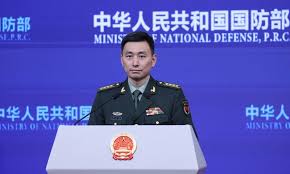Italy: The women in charge of Rome’s museums

Rome: On International Women’s Day we highlight Rome’s leading museums and archaeological sites – among the most important in the world – that are run by women.
While everybody knows that Rome is home to some of the world’s greatest museums, not every one is aware that the management of the city’s cultural heritage lies largely in the hands of women.
This is something to celebrate – and not just on Festa della Donna – as Italy strives to improve its gender equality record.
In 2019 the art historian Maria Vittoria Marini Clarelli became the first woman to hold the position of Rome’s superintendent of cultural heritage.
Since then Clarelli’s aims have included making the city’s cultural heritage more accessible to the public and “demolishing the crystal wall” between state and municipal administrations.
When the Colosseum Archaeological Park was established in 2017, archaeologist Alfonsina Russo beat 77 other candidates to land the new role of managing the Colosseum, Roman Forum, Palatine Hill and Domus Aurea. Since she took up her post Russo has spearheaded multiple restorations, cultural projects, digital innovations and opened up previously inaccessible areas of the Palatine Hill – leading a team of women archaeologists and restorers.
In 2016 Pope Francis appointed Babara Jatta as the first woman director of the Vatican Museums. A specialist in art history, Jatta has undertaken numerous restoration projects including the frescoes in Raphael Rooms. She has also raised the profile of one of the world’s most prestigious museums and is the most prominent female administrator in the Vatican.
Villa Borghese, home to a priceless collection of works by Bernini, Caravaggio and Raphael, is directed by professor of the history of modern art, Francesca Cappelletti, who took over in late 2020 from the long-standing director Anna Coliva. Within her first few months Cappelletti acquired a Guido Reni painting for the Villa Borghese collection and has launched a series of new digital programmes.
Rome art historian Flaminia Gennari Santori is the director of the Galleria Nazionale d’Arte Antica which encompasses both the Palazzo Barberini and the Galleria Corsini, between them home to countless masterpieces. Her career includes work and research in several US museums and she is the author of numerous publications on the history of collecting art.
Edith Gabrielli is the first director of the newly-created autonomous museum in the capital which combines the Vittoriano and Palazzo Venezia. A scholar of art history and museology, Gabrielli has a long career within the ranks of Italy’s culture ministry, becoming its youngest historic art director in 2010.
The modern art world in Rome is also governed by women, including many privately-run art galleries such as Galleria Valentina Bonomo, Maja Arte Contemporanea and Dorothy Circus Gallery.
Chiostro del Bramante, an extraordinary example of High Renaissance architecture designed by Donato Bramante in 1500, is today a well-known art museum hosting important temporary exhibitions. The Chiostro is run by three sisters: Laura, Giulia and Natalia de Marco, who have staged around 45 shows – ranging from Turner to Banksy – since the building’s restoration in 1996.
Based at a futuristic building designed by Zaha Hadid, the National Museum of 21st Century Arts, better known as MAXXI, is headed by Giovanna Melandri. A former Italian minister of culture, Melandri has been at the helm of MAXXI since it launched in 2010, helping to put it on the map by staging over 100 exhibitions, 2,000 cultural events and welcoming well over three million visitors.
The Galleria Nazionale d’Arte moderna e contemporanea (GNAM) hosts Italy’s national collection of modern art and is run by Cristiana Collu. Since her appointment in 2015, Collu has put her own distinctive stamp on the gallery, re-imagining its spaces, re-arranging its collections, hosting numerous exhibitions by contemporary artists and increasing the gallery’s profile on social media.
To celebrate the 2022 edition of Festa della Donna, women will have free entry to Italian state museums and archaeological sites on 8 March, with numerous cultural events being held in Rome, Milan and across Italy.





